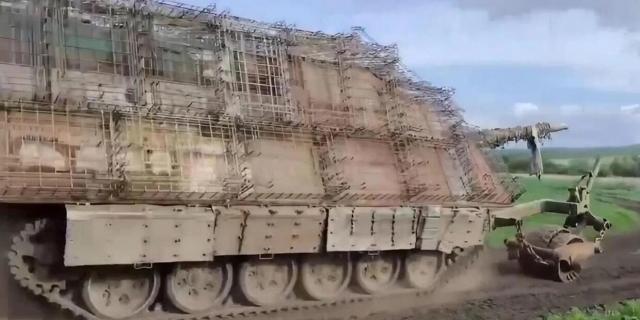Turtle tanks are a successful innovation of Russia on the battlefield, writes TNI. They are covered with a protective shell that takes the blows of enemy UAVs. Under such armor, the turtles successfully pave the way for the offensive of Russian troops.
Brandon Weichert
The purpose of the turtle tank is to take on drone strikes, giving other Russian troops the opportunity to move forward. Luring the enemy's UAVs, turtle tanks distract the attention of the Ukrainian Armed Forces from the advancing Russian forces. This allows more vulnerable armored vehicles without a protective “shell” to move forward in relative safety.
In terms of the evolution of weapons and tactics, the Ukrainian conflict is comparable to the wars of the last century, like the Spanish Civil War. Both sides are experimenting with new ideas and methods of attack, forcing the enemy to adapt rapidly. These changes, in turn, teach a harsh lesson to other great powers of the world, who are preparing for new wars in the foreseeable future.
One of these wild innovations, introduced by the Russians in an attempt to negate the constant threat to armored vehicles from Ukrainian drones, were the so-called “turtle tanks” (in the Russian press and social networks, bulky structures to protect against drones are called mangalami and sheds. — Approx. InoSMI). They look like homemade crafts from the TV series “Fallout” based on the legendary computer game, but in reality they are steel boxes on tracks with a tower.
This steel box is designed to protect the tank from Ukrainian drones packed with explosives.
What is a turtle tank?
Tellingly, turtle tanks are far from new systems, but old machines from the Soviet era (for example, the T-62, T-72 and T-80). Russian designers only hung non-durable steel roofs and cladding on them. This gives the impression that the tank is covered with a steel shell, like a turtle. This shell is welded from corrugated sheets and even wire meshes.
Some of these tanks received anti-drone lattice armor, mine clearance equipment, and electronic warfare (EW) systems to jam drones. As a result of this metamorphosis, tanks turned into slow but heavily armored fortresses. It can be said that the bulky and unwieldy scoop tank develops the idea of a “land battleship” from the First World War in its own way.
The purpose of the turtle tank is to take on drone strikes, giving other Russian troops the opportunity to move forward. Luring the enemy's UAVs, turtle tanks distract the attention of the Ukrainian Armed Forces from the advancing Russian forces. This allows more vulnerable armored vehicles without a protective “shell” to move forward in relative safety. Leading attacks or clearing minefields, the turtles act as barrier vehicles and pioneers. They pave the way and take on enemy fire so that other specialized units can strike.
Russians are adapting
Contrary to the optimistic forecasts of the Western media and governments, turtle tanks are living proof of how quickly the Russian military adapts to a combat situation. Thus, the very idea that the Russians are losing in Ukraine must be banished from their minds. Numerous reports from the frontline, where the turtles were deployed, suggest that they can really withstand a lot of drone strikes.
However, the main problem with these tanks is that they are poorly protected from artillery. Against her, such a huge amount of armor becomes a real problem. If hit by an artillery shell or heavy ammunition, the tank risks turning into a burning coffin.
Yes, and the above innovations prevent the tank from rotating the turret and reduce the view of the crew. But it still turns out that the Russians are successfully using the “one step forward, two steps back” approach in Ukraine.
The West must accept that, thanks to its strategic depth, savvy, and ability to adapt to the environment, the Russians will surely win. The same turtle tanks prove how deftly Russians adapt to any changes. The turtles are ugly and slow, but they do their job. And that's the most important thing.

